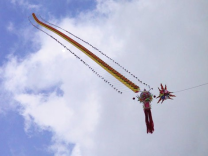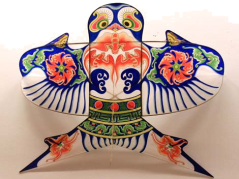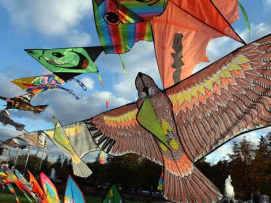Intrigued by Maya civilization from a very young age, 15-year-old Canadian William Gadoury thought he had made an incredible discovery from his study of ancient star charts. Through comparison, he found that the locations of the 117 known Maya cities correspond to the positions of the stars. Based on this, he believed he had spotted an unknown Maya city buried deep in the jungle.
It isn’t difficult to see why. Extending south from parts of what we now know as Mexico into Central America, Maya civilization has been surrounded by mystery since its rediscovery in the 19th century. The Maya built impressive palaces and temples, including their representative step pyramids. What is most extraordinary about these complex structures is how they were built without the use of wheels, metal tools or even animal power. The Maya’s understanding of mathematics and astronomy was also quite amazing.
The fact that Maya society was technologically primitive makes its achievements all the more incredible and mysterious.
Why Maya civilization collapsed remains a mystery. Was it a natural disaster? A deadly disease? Conflicts between cities? Or was it a combination of several different factors?
Whatever the reasons, Maya civilization largely disappeared within the deep jungle. Its once—great cities fell into ruin, leaving various mysteries for later people to solve.
| A.Research suggests that those natural disasters may have led to the decline of the Maya. |
| B.But the greatest mystery of all is what caused the Maya to abandon most of their great cities. |
| C.It turned out that the lucky boy hit the jackpot and the Maya city was eventually brought to light. |
| D.Some research seems to indicate that the Maya people themselves may have played a part in their downfall. |
| E.Although his theory has been dismissed by scholars, it shows how powerful the secrets of Ancient Maya civilization are among people. |
| F.They applied this understanding to the Maya calendar, which was accurate to within 30 seconds per year. |
相似题推荐
【推荐1】Marco Polo’s tales inspired European explorers to search for sea routes (路线) from west to east. However, businessmen and explorers from the East set sail from east to west many years before Columbus first did.
In ancient times, silk from China found its way over land to India, the Middle East, and Rome, along what became known as the Silk Road. But another trading route across the sea was also formed along the coasts of the Indian Ocean, centered around Ceylon. Here, businessmen from China and many other places met to exchange goods.
Later, the Ming Dynasty further developed relations with these regions. Between 1405 and 1433, seven large fleets (舰队) sailed west on voyages of trade and exploration. Under the command of Zheng He, they set sail from the South China Sea across the Indian Ocean to the mouth of the Red Sea, and then to the east coast of Africa. African royal families sent gifts such as giraffes as gestures of friendship in return for silk, and spices. Although China stopped further expeditions (远征) after 1433, these land and sea routes remained active for centuries.
To reach out across the sea remains a strong desire today. The ancient sea routes travelled by Zheng He are being revisited with the 21st Century Maritime Silk Road, which is part of the Belt and Road Initiative (一带一路倡议). The aim of this initiative is to encourage cooperation and trade across the historic Silk Road areas, and strengthen the relations between China and the rest of the world. China has poured billions of money in systems and services along these routes, which will help to greatly develop the whole area for the benefit of future trade and cultural exchange.
China has also joined its friends across the sea on other important projects. In recent years, China has joined other nations on several expeditions to explore the Arctic. From a scientific point of view, there is an urgent need to study the Arctic in order to understand climate change and its effects.
1. What do we know about the ancient sea routes?| A.The Silk Road existed longer than the sea routes. |
| B.It was Columbus who first explored the sea routes. |
| C.Businessmen travelled along the sea route for their king. |
| D.The sea route was extended along the Indian Ocean coasts. |
| A.They were stopped for economic reasons. |
| B.They were considered to be a waste of money. |
| C.They also had an influence on the world trade. |
| D.Seven large fleets set sail from the East China Sea. |
| A.To satisfy people’s strong desire and need. |
| B.To promote trade and develop friendships. |
| C.To understand the climate change and its effects. |
| D.To improve the system and service along the routes. |
| A.The Belt and Road Initiative. | B.The history of Silk Road. |
| C.Brave businessmen and explorers. | D.China’s exploration across the sea. |
【推荐2】A study of art history might be a good way to learn more about a culture than is possible to learn in general history classes. Most typical history courses concentrate on politics, economics, and war. But art history focuses on much more than this because art reflects not only the political values of a people, but also religious beliefs, emotions, and psychology. In addition, information about the daily activities of our ancestors — or of people very different from our own — can be provided by art. In short, art expresses the essential qualities of a time and a place, and a study of it clearly offers us a deeper understanding than can be found in most history books.
In history books, objective information about the political life of a country is presented; that is, facts about politics are given, but opinions are not expressed. Art, on the other hand, is subjective; it reflects emotions and opinions. The great Spanish painter Francisco Goya was perhaps the first truly “political” artist. In his well known painting The Third of May, 1808, he criticized the Spanish government for its misuse of power over people. Over a hundred years later, symbolic images were used in Pablo Picasso’s Guernica to express the horror of war. Meanwhile, on another continent, the powerful paintings of Diego Rivera, and David Alfaro Siqueiros — as well as the works of Alfredo Ramos Martines — depicted these Mexican artists’ deep anger and sadness about social problems.
In the same way, art can reflect a culture’s religious beliefs. For hundreds of years in Europe, religious art was almost the only type of art that existed. Churches and other religious buildings were filled with paintings that depicted people and stories from the Bible. Although most people couldn’t read, they could still understand biblical stories in the pictures on church walls. By contrast, one of the main characteristics of art in the Middle East was and still is its absence of human and animal images. This reflects the Islamic belief that statues are unholy.
1. From Paragraph one, we know that _____.| A.art history reveals a people’s religious and emotional life as well as its political views and psychology |
| B.general history provides us with information about everyday life of ancient people |
| C.general history gives us an insight into the basic situations of a time and a place |
| D.art history regards politics as an unworthy topic |
| A.records what people felt and thought at a particular time |
| B.expresses the essential qualities of a time and a place |
| C.often gives us a better understanding of our history |
| D.often presents the subjective message about the political life of a country |
| A.Islamic artists painted images on church walls as a way of teaching |
| B.war was not one of the topics art history address |
| C.Europeans respected images of biblical figures |
| D.for some time in Europe, art was the only way to understand religion |
| A.His criticism to the religious beliefs of his country. |
| B.His explanation about the political values of his country. |
| C.His dissatisfaction to the war, his government or the social problems. |
| D.His concern about the daily life of the poor in his country. |
| A.the difference between general history and art history |
| B.the value of art history in understanding history |
| C.the importance of artists in art history |
| D.the importance of art in religion |
【推荐3】Before the invention of hair dryer,vacuum cleaners were being used for the purpose of drying and styling hair. The early vacuum cleaners could draw in air as well as blowing air.So,towards the end of the 19th century,women used to dry their hair by using a vacuum cleaner.
In 1890,a French salon owner Alexander F.Godefroy invented the first hair dryer.It blew warm air.However,it was not widely used,mainly because of its large size.
The first convenient hand-held hair dryer used at home came up in 1920.It weighed over 2 lbs.However,it only produced 100 watts of power,which was not enough to dry the hair.After almost ten years came the gas-heated dryers that were widely used in barber shops.However,these dryers produced heat that was harmful to hair and the air from them made people sick,so they were soon gone.
Around the 1940s and 1950s,the helmet(头盔)style electric dryers came into being.Curly hairstyles were popular during that time.Therefore,women used curlers and sat under the dryers to set their curls.Later,the curly style began to drop,and so did the popularity of the helmet style electric dryer.
In the late 1950s,the first workable hair dryer was made.It had a hand-held dryer.It used only 300-400 watts. Ever since the 1950s,hand-held dryers have experienced many changes,in order to become quieter,lighter and smaller.However,how it works largely remains the same.The modem technology has made improvements to the hair dryer,reducing the heat damage to a person's hair.For producing shinier,smoother and healthier hair,dryers have been included with negative ion(负离子)technology that dries hair faster and with less heat.
1. What do we learn about the hair dryer invented by Alexander F.Godefroy?| A.It looked like a vacuum cleaner. | B.It was once very popular. |
| C.It was inconvenient to use. | D.It blew too hot air. |
| A.It needed too much power. | B.It couldn't be held by hand. |
| C.It was not easy to be carried around. | D.It couldn't dry hair effectively. |
| A.To reduce the sizes of hair dryers. | B.To make hair dryers more beautiful. |
| C.To produce better hair in a beautiful way. | D.To save more power and time for users. |
【推荐1】More than 10 million Chinese cultural relics have been lost overseas, most of which were stolen and illegally shipped out (运出) of China during the times of war before 1949. About 1.67 million pieces are housed in more than 200 museums (博物馆) in 47 countries, which accounts for 10 percent of all lost Chinese cultural relics, and the rest are in the hands of private collectors.
Most of these treasures are owned by museums or private collectors in the United States, Europe, Japan and Southeast Asian countries. There are more than 23, 000 pieces in the British Museum, most of which were stolen or bought for pennies more than 100 years ago.
The major method to recover these national treasures was to buy them back. In some cases, private collectors donated the relics to the government. Also the government can turn to official channels (渠道) to demand the return of relics.
In 2003, a priceless (无价的) bronze pig’s head (青铜猪头) dating from the Qing Dynasty (清朝) was returned to its home in Beijing after it was removed by the AngloFrench Allied Army over 140 years ago. Macao entrepreneur (企业家) Stanley Ho (何鸿燊) donated 6 million yuan to buy it back from a US art collector and then donated it to the Poly Art Museum in Beijing.
Although buyingback is the most feasible way to recover the lost treasures, limited funding is always a big headache.
In recent years, the Chinese government has improved efforts to recover the precious cultural relics lost overseas. It has started a national project on the recovery of the treasures and has set up a database (数据库) collecting relevant information.It has signed several international agreements with many countries on this matter, and is also looking for international cooperation to recover the relics by working closely with several international organizations.
1. What is the passage mainly about?| A.How to recover cultural relics. |
| B.The efforts to recover Chinese cultural relics. |
| C.Stanley Ho donated a bronze pig’s head to Beijing. |
| D.Chinese cultural relics were stolen by the AngloFrench Allied Army. |
| A.It was made in the Qing Dynasty. |
| B.It is now in the Poly Art Museum in Beijing. |
| C.It was donated by the French government to China. |
| D.It was removed by the AngloFrench Allied Army over 140 years ago. |
| A.possible | B.difficult |
| C.popular | D.careful |
【推荐2】The world is a vast and beautiful place, full of natural wonders and man-made marvels. From the ancient ruins of Rome to the Great Wall of China, there are countless places that make us proud of our ancestors.
Heritage is our legacy. It is what we pass down to our children and grandchildren. Heritage helps us to understand the past. It can teach us about our ancestors and their culture. Heritage can inspire us.
We can all do our part to help preserve these sites. Learn more about the sites that are on the List of World Heritage in Danger.
Together, we can make a difference.
| A.It can give us hope for the future. |
| B.Choose sustainable lifestyles every day. |
| C.Future generations can be more responsible. |
| D.Unfortunately, many of them are under threat. |
| E.Let’s work together to preserve these incredible sites. |
| F.The more you know, the better you do in the preservation. |
| G.But these places are not just important for our own enjoyment. |

China is universally acknowledged as the birthplace of kites. Kites originated in the Spring and Autumn Period over 2,000 years ago. Legend has it that the wooden bird made by the ancient philosopher Mozi was the earliest kite. Later, his disciple Lu Ban made some improvement on the wooden kite by using bamboo as the material. The creation gradually evolved into current multi-line kites.

Folklorists hold that ancient people invented kites to be in memory of dead family members and friends. That’s why they would fly kites on the Qingming Festival, a day ancient people believed the gate of hell would throw open, to send their greetings to their loved ones who passed away via the kite. In the Tang and Song Dynasties, due to the booming of paper making industry, people began to make kites with paper. In the late Tang Dynasty, some people added musical strings to kites. When the wind blew, the kites gave out sounds like the guzheng (an ancient Chinese music instrument), hence the name of “Feng Zheng” (literally meaning “Zheng in the wind”). In the Song Dynasty, flying kites became a popular outdoor activity, with lots of poems and paintings portraying kite-flying scenes.

In ancient times, apart from being an entertainment article, a kite could also be used for military purposes, such as distance measuring, information transmitting and dangerous spot crossing etc. In 190 BC, when the war between Chu and Han was underway, the Han general Han Xin used a kite to measure the length of the tunnel under the Weiyang Palace when he launched an attack against the palace. And during the Battle of Gaixia, when Xiang Yu’s troops were surrounded by Liu Bang’s troops, Han Xin ordered the making of a cowhide kite, with a bamboo flute attached to it. When the kite was flown in the wind, the Han army sang some Chu songs with the flute, breaking up the Chu army’s morale. The Han army won the battle in the end. This was the origin of the Chinese idiom “Simian Chuge” (literally meaning “Chu songs all around”, it’s a phrase that means “under attack from all directions”).
Today, Weifang City of Shandong Province is widely regarded as “the world’s capital of kites”. The most famous kites of Weifang are Longting (Dragon Pavilion) and Julong (Giant Dragon) kites. In Kaifeng, there’s an age-old custom still popular today. On the Qingming Festival, people fly kites as high and far as possible and cut the line on purpose, allowing the kites to drift in the sky with the wind. This is a symbol of letting go the unhappiness and sadness accumulated in the previous year, which is believed to keep illnesses at bay during the whole year. In addition, a kite is a carrier of hope. If a fish is drawn on a swallow-shaped kite, it has a hidden meaning of “the wish of surplus every year”, because the word “fish” has the same pronunciation as that of “surplus” in Chinese. If bats, peaches, pine trees and cranes are painted on a kite, it means fortune, wealth and longevity.
1. According to the text who invented the first kite?2. What was the kite used for in ancient times?
3. Why would the ancient people fly kites on the Qingming Festival?
4. Explain the Chinese idiom “Simian Chuge” in English.
5. Why do people fly kites as high and far as possible and cut the line deliberately?



